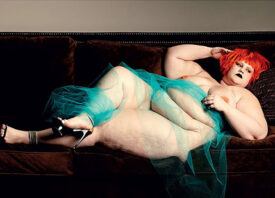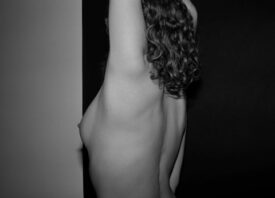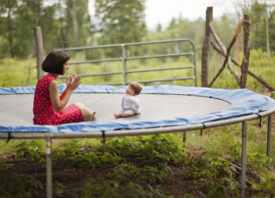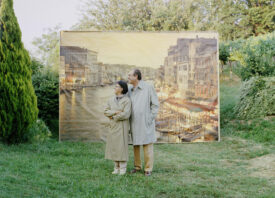Search this site
Behind-the-Scenes with a Photographer Who’s Helping to Reshape the Industry (Sponsored)

In our increasingly image-saturated world, Carmen Chan‘s photographs feel like a breath of fresh air. Before settling in Los Angeles, the photographer worked in New York City and Hong Kong, refining her aesthetic and her voice across the fashion and editorial world. While tackling projects for major brands and publications, she sets herself apart with her effortlessly clean and natural style. Her approach to color and form results in images that feel breezy, uncluttered, and full of energy, and she has a way of tapping into the most authentic aspects of her subjects, whether they’re models and celebrities or interiors and cities.
As a leader in her field, Chan understands the importance of carving out a better future for other artists, and she’s not afraid to speak up about the need for more diversity in the industry. Today, the award-winning photographer has established herself as a force to be reckoned with, both as an artist and a businessperson, landing coveted assignments and supporting her peers along the way.
Chan’s Squarespace website reveals an eye that is at once modern and classic, whether you’re browsing her travel journal or a collection of her intimate portraits. She also created a blog to take us behind-the-scenes on some of her shoots and a quarterly newsletter to keep clients and followers informed about new projects. We talked to Chan about her online presence, her favorite kinds of projects, and her advice for emerging photographers who hope to follow in her footsteps.
Why is it important for you to have a website of your own, outside of social media?
“As a professional photographer, it’s important to show a strong, succinct edit of your best work. Clients need a place where they can quickly see the breadth of your skill and experience and find what they need that is relevant to the project at hand. Scrolling through an Instagram feed isn’t quite conducive to that.”
What stood out to you about Squarespace as a website builder? Why did you choose it when you set out to create a website?
“I chose Squarespace out of all the other website builders because of the ease of customization. I like how the pages are built with blocks so that you can drag and drop different elements to customize the layout without having to code. I also like the ease of asset management. The way they designed the back end makes it really easy to upload new work and rearrange the order within a gallery. They also had a few templates that suited my needs as far as design and the layout of projects and galleries. The site also loads quickly, which is crucial since clients don’t have the time or patience to wait for your site to load.”
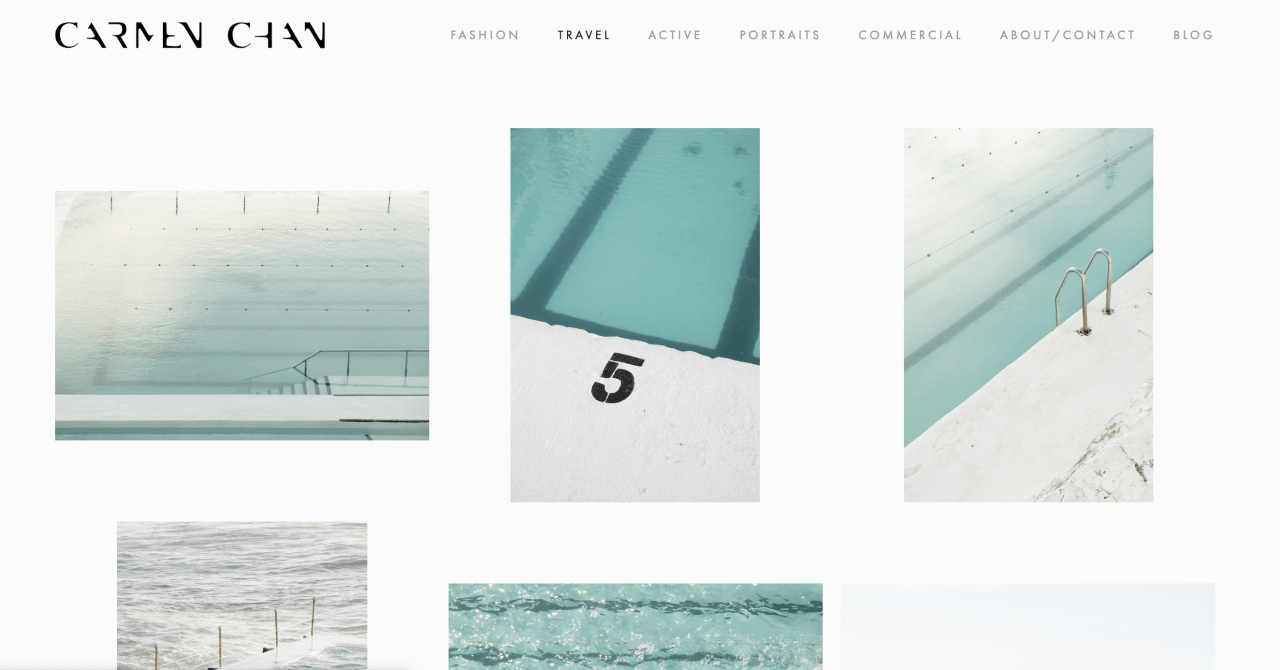
Tell us about your website design.
I use the Avenue template. I like that it’s simple but beautiful. It allows me to present my projects with plenty of negative space that fits with the style of my work and allows the images to breathe, kind of like a matte/frame. It’s important that the design doesn’t overshadow or distract from the actual work, and this template was just that. Feedback about my website’s design has been great. People compliment ME on how clean it is, and I receive inquiries from clients having only visited my website, which means it has served its purpose!”
All of the photos on your website are impeccable. What does your curation process look like?
“Thank you so much! I work with a consultant and my agent on the curation of my website. I’ll cull my work down to about 500 images and these get sent to a consultant. Based on my goals, she will select and sequence the work in a way that best represents my skill and contributes to a cohesive style. After that, my agent will take the final pass and make suggestions to further refine the edit.”
Why did you decide to set up your own blog as part of your domain?
“The blog is the space between social media and my website. It’s a place to see my work in chronological order with a little back story, and the work that doesn’t make it onto my website goes on my blog. Keeping this diary and looking into the archives is a nice reminder of my growth and pushes me to try new things.”
In your eyes, what makes a great portrait, in terms of subject, atmosphere, and everything in between?
“A great portrait Is a picture that tells a story about someone. It’s the magic that happens when the light and the environment are perfectly placed. It comes down to capturing the subject in a moment that feels natural and personal.”
What do you look for when deciding whether or not to collaborate with a brand? What kinds of companies and assignments excite you the most?
“I look for whether the brand is serving a space that I want to contribute to and support. It’s important that the client’s brief is in line with my style and my specialties and that they understand the value in hiring someone specialized so that they receive the best images possible.
“Companies that are telling meaningful stories (particularly featuring real people) or creating products that support the health of people or the environment excite me. My favorite assignments are portraits of people (in their homes, studios, workplaces, etc.) and/or places (stores, restaurants, hotels, cities). I relish in the opportunity to explore and notice the decisions and intricacies of objects and design and how they form a narrative.”

What’s the difference between shooting in the studio versus working at major events like New York Fashion Week? How do you maintain your clean, intimate style when you have little control of what’s going on around you?
“The last part of your questions hits the nail on the head. The two experiences are quite different. In-studio you have control of everything–the light, the model, the styling, the background, the composition. You have an idea or vision that you’re bringing to life. At Fashion Week, the only thing you have control over, through the way you position yourself relative to the subject, is the composition and the direction of the light. You’re at the mercy of what’s in front of you, and you have to make it work. It’s constant problem-solving. I maintained my style by keeping an eye on foreground elements/negative space that help eliminate distracting scenes, shooting extremely shallow, and being aware of the direction of the light source.”
How much of a role do you play in some of your bigger productions? What’s it like collaborating with talent, makeup artists, stylists, etc.?
“My involvement varies across productions, regardless of the size. I’m always happy to support clients if I can and will offer my opinion on casting and art direction for wardrobe, hair, and makeup styling. I enjoy working on commercial productions for the opportunity to collaborate with other creatives, both on the client side and on the crew, to create something I wouldn’t have been able to on my own and without their talent. It’s awesome when you’re able to work with a client who is open to ideas from the crew and able to trust their expertise and taste.”

How do you ensure that all your shoots have your “signature” attached to them? In other words, we consume so many images per day, and yet your photos are instantly recognizable. What defines a Carmen Chan photograph?
“Thank you for saying that. It certainly wasn’t the case right off the bat, and I have worked for years (and still working) to hone my ‘signature.’ I always try to create a space for that is clean and graphic and that frames the subject and draws the viewers’ focus. I also make an effort to direct the subject in a way that helps them feel comfortable which leads to them being relaxed. Lastly, I often bring in a foreground element into the frame that I feel add a sense of depth and intimacy.”
How has Los Angeles, and the artist community there, helped you grow and evolve as a photographer? Any important lessons this city has taught you?
“Not only has the artist community helped me grow, but the creative community as a whole has as well. Writers, community leaders, and people from different brands have all been so supportive and willing to collaborate. Moving to LA has given me space and resources to focus on my personal projects. I’ve learned that if you focus on supporting those around you, the support you receive will come back multiplied.”
You’ve been outspoken about the need for recognizing more diverse voices within the photo industry. What moments have given you hope that we’re heading in the right direction, and conversely, what still disappoints you about the lack of diversity in photography?
“Moments that give me hope include the firsts that have happened recently–like the Vogue and Rolling Stone covers being photographed by people of color for the first time–and seeing more editors hiring women to photograph covers and portfolios that feature stories about women. I also look forward to the newsletters from Women Photograph and seeing all the incredible work that women are creating. Conversely, the A1 Lead Photo Byline statistics for printed news are still quite depressing – the average in 2018 depending on the publication was 8-41%.

What business tips would you give to emerging photographers who want to branch out on their own?
“Put your systems in place. If you want to pursue this as a full-time job, then you are running your own business. This means you need systems for creative/personal work, accounting, payroll, bookkeeping, marketing, CRM, cash flow, archive/storage, insurance, estimating, negotiating, usage, etc. There is so much to learn!”
Get started with your Squarespace website today and use the code FEATURESHOOT to get 10% off your first purchase.
Squarespace is a Feature Shoot sponsor.
